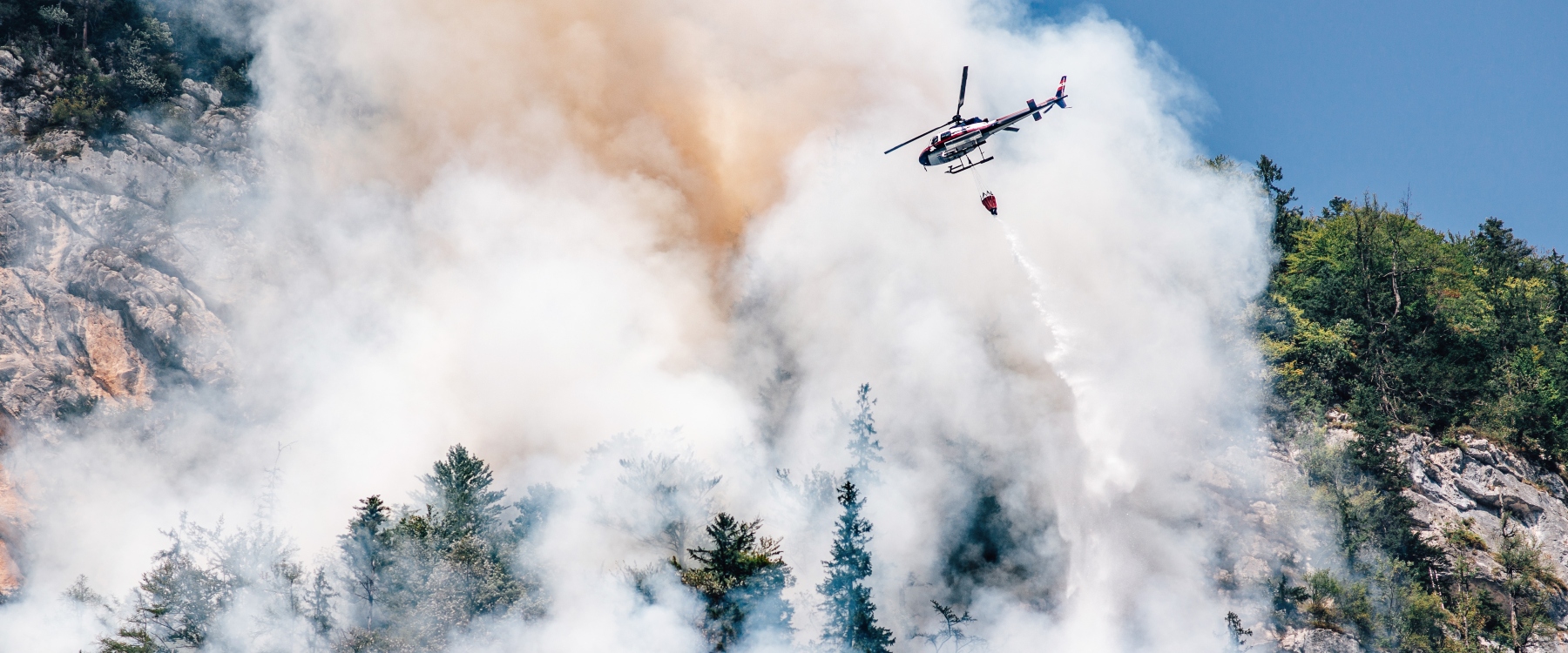Partnering for Disaster Resilience

Idaho State has received a $141,112 grant from the Idaho Office of Emergency Management (IOEM) to help improve local wildfire preparedness. The funding comes from the federal Building Resilient Infrastructure and Communities program, which is administered by the Federal Emergency Management Agency (FEMA).
The “Disaster Mitigation Response Capacity Enhancement” initiative will run from September 2024 to July 2027. It brings together ISU’s Geographic Information Systems (GIS) team, the Master of Public Administration (MPA) program, Bannock County Emergency Management, and community partners like the Southeast Idaho Council of Governments (SICOG). The goal is to assess community needs and find ways ISU can support local governments in their wildfire mitigation efforts.
Shin Kue Ryu, Ph.D., ISU’s faculty lead on the project, notes that there hasn’t been a year in over 50 years of data collection in which there wasn’t a wildfire in Idaho.
“We know wildfires will happen in Idaho,” Ryu says, “and they will happen unfortunately throughout the future. This grant is about doing something before a larger disaster strikes.”
At the heart of the project is the idea that prevention saves lives and money. Ryu says that response is crucial, but it’s also incredibly expensive. FEMA research shows that each dollar spent on mitigation saves about four dollars in recovery. Bannock County Emergency Management Director Wes Jones says a whole-community approach strengthens emergency management by leveraging expert partnerships to build capacity and reduce costs.
The project has three main components. Component one is to strengthen citizen engagement and emergency awareness. ISU and Bannock County’s Local Emergency Planning Committee, a 482 member multi-agency body, will work to enhance preparedness and coordination.
Darin Letzring, IOEM area field officer for Southeastern Idaho, says, “emergency preparedness and response includes the whole community. This grant is a great step forward to another level of preparedness for Idahoans.”
Component two includes updating building codes and legal frameworks. Currently, many homes are not built to fire safety codes. Additionally, rural living has gained in popularity. Ryu notes that while many enjoy living in rural areas, it comes with risks: During a wildfire, it makes response more difficult, it raises vulnerability, and it increases the possibility of human-induced wildfire. As more Idahoans move into these fire-prone regions, the need for community awareness and coordinated planning becomes increasingly urgent.
Component three involves building local analytical and technical capacity. Through satellite mapping and GIS technology, ISU will support agencies in assessing vulnerabilities related to wildfire risks. Keith Weber, director of ISU’s GIS Training and Research Center, and a team of students will conduct data-driven risk analysis.
Each dollar spent on mitigation saves about four dollars in recovery.
“Many local communities don’t have staff with the training or time to conduct geospatial analysis for informed decision-making,” Ryu says. “Through grant activities and support from ISU’s GIS Center, led by Director Keith Weber, we’ll be able to help fill that gap.”
Two ISU students will contribute to the project while gaining valuable professional experience. One student from the geosciences program will work under Weber’s guidance, focusing on the analytical GIS component. The other, MPA graduate student Michelle Collier, will work with Ryu to assist with community outreach and engagement.
Collier spent years as a 911 dispatcher and saw firsthand how disaster can damage a community. She sees the project as an opportunity not just to build networks, but to shift from disaster response to proactive mitigation.
“This has allowed me to work on the preparation side of disasters to hopefully help minimize the damage disasters cause,” she says. “I’m hopeful that this project will bring better awareness and preparedness to Idaho in regards to disaster management.”
Early conversations are underway about the potential to host a regional Emergency Operations Center on campus. Such a center could enhance training and credentialing for emergency personnel, improve ISU’s offerings in disaster management, and provide additional community services.
Layne Bourgeous, executive director of SICOG, says, “By centralizing coordination and resources and fostering collaboration, we are setting the stage for a more resilient Southeast Idaho.”
Post-Fire Response
Developed in 2022, ISU students working with faculty in the Geographic Information Systems (GIS) Center designed the NASA RECOVER project, a post-wildfire decision support system providing current spatial data for wildfires burning across 11 western states. Since its launch, RECOVER has provided data and actionable information for over 500 wildfires, including the 2025 wildfires in Los Angeles. The data produced by the RECOVER project is available for download and as an online web map for viewing. It has now been transferred to the USDA Forest Service Geospatial Technology and Applications Center in Salt Lake City as well.
GIS Director Keith Weber says, “What was kind of amazing, is our involvement with the LA wildfires was more or less by chance. Our servers are the workhorses behind RECOVER, applying our process automation technology called the ‘Large Fire Trigger or LFT.’ Normally, myself and my students working on the RECOVER project spend the winter updating all our data sources to ensure we are always providing current and correct spatial data. As part of this refresh cycle, we turn off our servers in January. Luckily, we did not turn off our servers in January and they continued to provide data and daily updates for the LA fires even as we continued to update and refresh the data used by our servers. It demonstrated the flexibility and agility of the LFT technology we developed as part of RECOVER. This was a learning lesson for our students to better understand wildfire as well as the role of technology to support emergency managers.”
